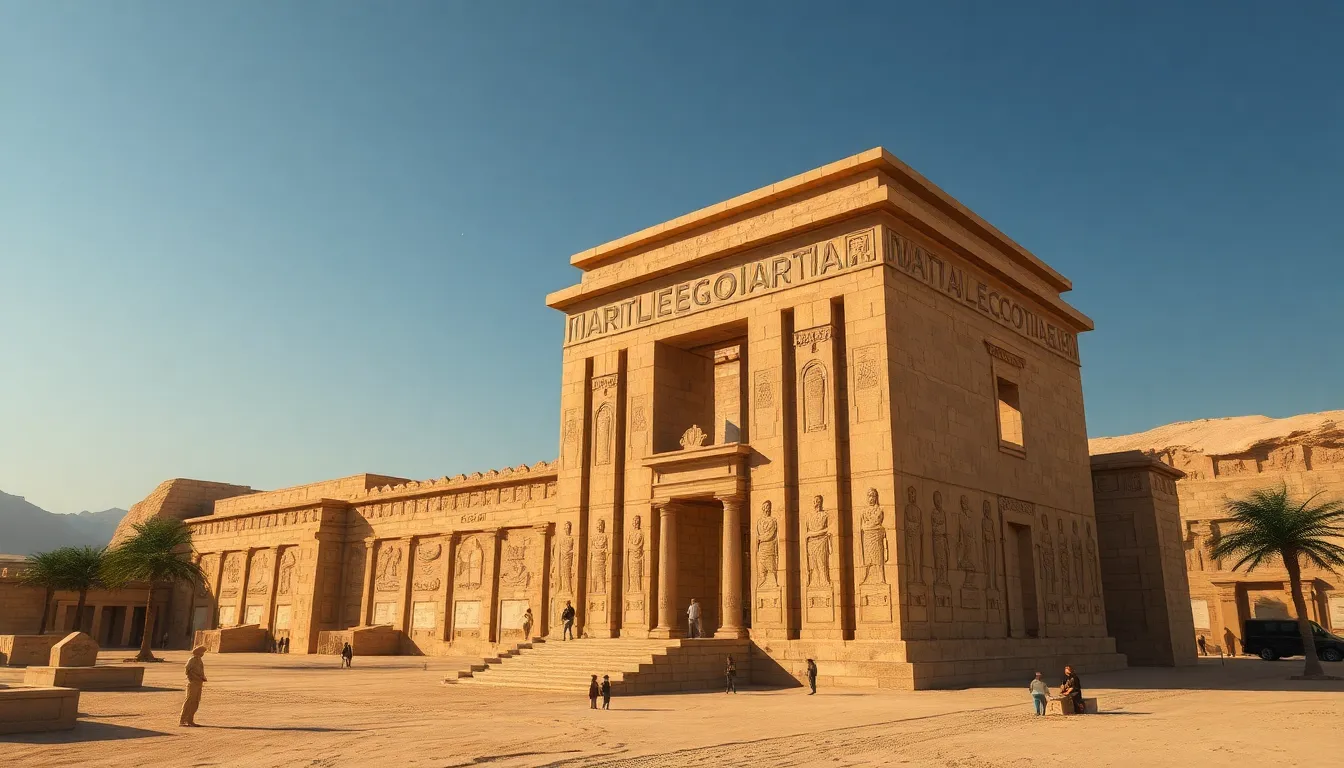The Sacred Geography of the Temple of Geb
I. Introduction
The Temple of Geb, dedicated to the ancient Egyptian god of the earth, serves as a profound example of how geography intertwines with religion in ancient Egypt. As a central figure in the Egyptian pantheon, Geb was revered not only for his dominion over the earth but also for his role in the creation myth, where he represented the fertile land that nourished the people. This article aims to explore the significance of the Temple of Geb’s location, its architectural features, and the rituals that took place within its sacred precincts. We will also delve into the myths associated with Geb and the impact of modern archaeological discoveries.
II. Historical Context of the Temple of Geb
Understanding the historical backdrop of the Temple of Geb is crucial for appreciating its significance. The temple is believed to have been constructed during the Middle Kingdom of Egypt, a period known for its artistic and architectural advancements. The temple was built in a strategic location that emphasized Geb’s connection to the earth and fertility.
- Origins and construction: The temple was erected as a place of worship and as a representation of Geb’s earthly domain.
- Significance of Geb: As the god of the earth, Geb played a critical role in creation myths, being the father of Osiris, Isis, Seth, and Nephthys.
- Historical events: The temple witnessed various significant events, including royal ceremonies and agricultural festivals that celebrated the earth’s bounty.
III. Geographic Location and Its Symbolism
The physical location of the Temple of Geb is deeply symbolic. Situated near fertile lands and water sources, the temple’s site was integral to its religious significance.
- Description: The temple is located in the Nile Delta region, an area known for its rich soil and agricultural productivity.
- Divine presence: The proximity to water and fertile fields symbolized the nurturing aspect of Geb, highlighting the relationship between geography and divine presence.
- Surrounding symbolism: The landscape around the temple, including mountains and rivers, represented the boundaries of Geb’s earthly domain and served as a reminder of his omnipresence.
IV. Architectural Features of the Temple
The architectural design of the Temple of Geb reflects its sacred purpose and the integration of natural elements.
- Design elements: The temple features massive stone walls, intricate carvings, and spacious courtyards that facilitated worship and rituals.
- Integration of landscape: The architects incorporated natural features, such as boulders and trees, into the temple’s design, creating a harmonious space that echoed Geb’s connection to the earth.
- Sacred spaces: Within the temple complex, areas were designated for specific rituals, each reflecting aspects of Geb’s mythology and his relationship with the earth.
V. Ritual Practices and Sacred Geography
The rituals performed at the Temple of Geb were deeply intertwined with its geography, reflecting the importance of the land in ancient Egyptian spirituality.
- Overview of rituals: Rituals included offerings of grain and flowers, ceremonies for fertility, and agricultural festivals that honored Geb.
- Geography’s role: The timing of these rituals often coincided with seasonal changes, such as planting and harvest periods, emphasizing the connection between the land and divine favor.
- Influence on rituals: The physical attributes of the temple’s location, such as the fertility of the surrounding soil, influenced both the nature and timing of the rituals performed.
VI. Myths and Legends Associated with the Temple
The Temple of Geb is rich in myths that reinforce its sacred significance and the role of Geb in Egyptian mythology.
- Key myths: One prominent myth involves the creation story where Geb is depicted as lying beneath the sky goddess Nut, which illustrates the connection between the earth and the heavens.
- Influence of stories: These myths shaped the perception of the temple as a sacred space, reinforcing Geb’s role as the giver of life and sustenance.
- Artistic representations: The temple’s walls are adorned with carvings depicting scenes from these myths, serving as a visual narrative of Geb’s importance.
VII. Modern Interpretations and Archaeological Discoveries
Recent archaeological discoveries have shed light on the Temple of Geb, enhancing our understanding of its sacred geography and historical context.
- Recent findings: Excavations have uncovered artifacts and inscriptions that provide insights into the rituals and daily activities conducted at the temple.
- Contemporary understanding: Modern scholars are revisiting the temple’s significance, exploring how its geography influenced religious practices and community life.
- Impact on spirituality: The temple has become a site of interest for modern spiritual seekers and tourists, highlighting the enduring legacy of Geb’s worship.
VIII. Conclusion
In summary, the Temple of Geb stands as a testament to the intricate relationship between geography and spirituality in ancient Egypt. Its location, architectural elements, and the rituals performed within its walls underscore the importance of the earth and fertility in Egyptian cosmology. The enduring legacy of the Temple of Geb continues to resonate, inviting exploration and reflection on how geography shapes spiritual beliefs. The interplay between the sacred and the natural world remains a profound aspect of understanding ancient Egyptian religion.




